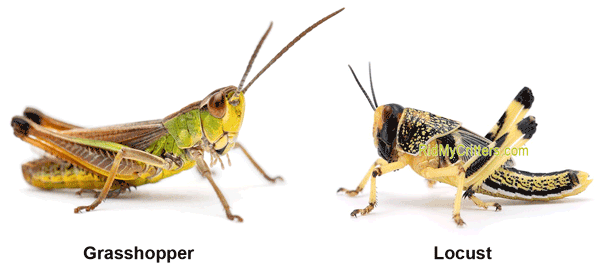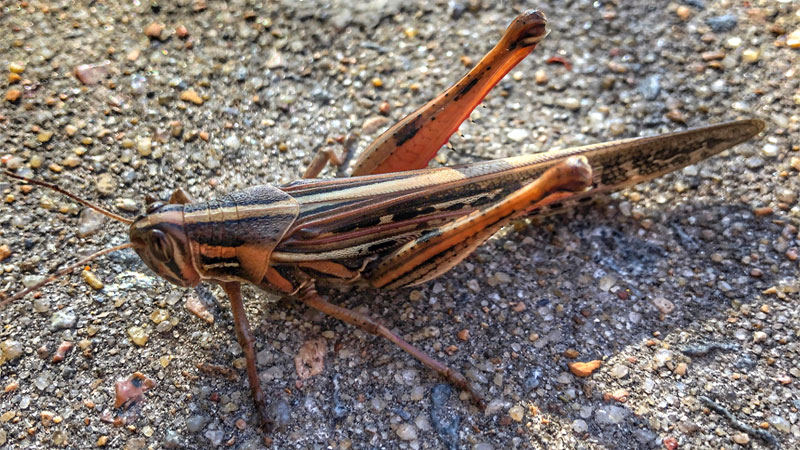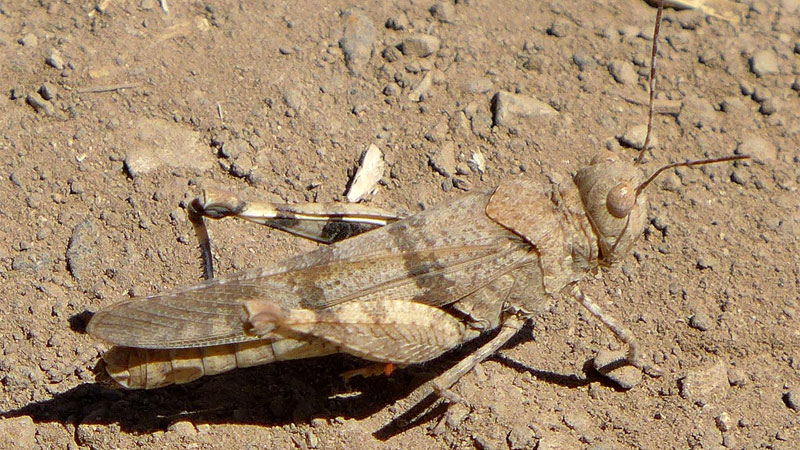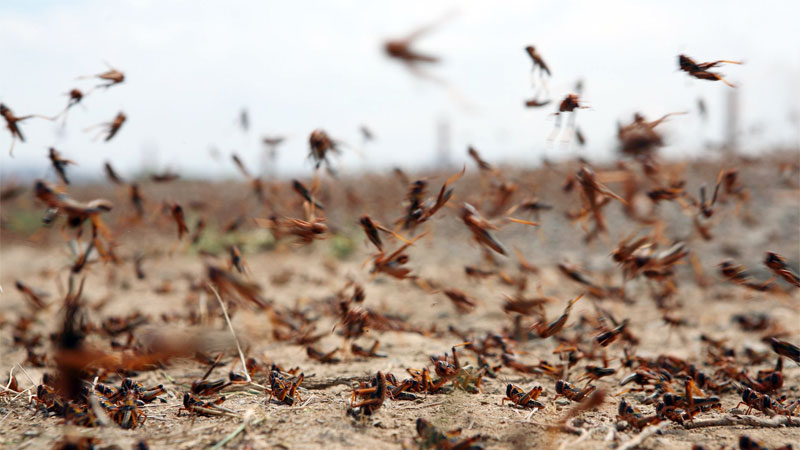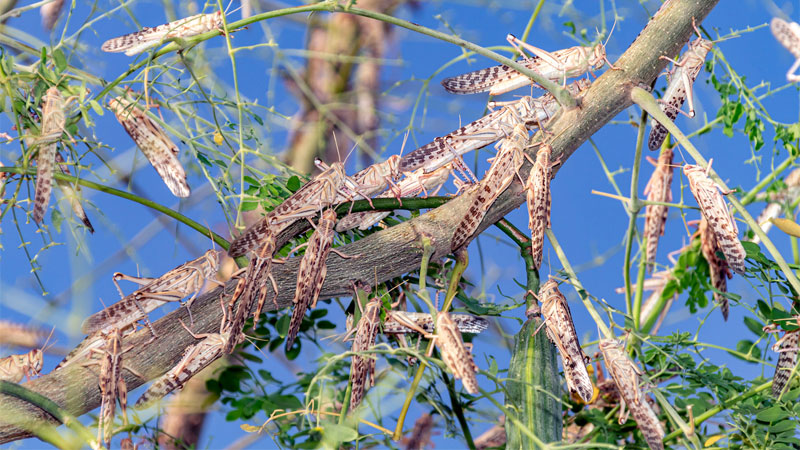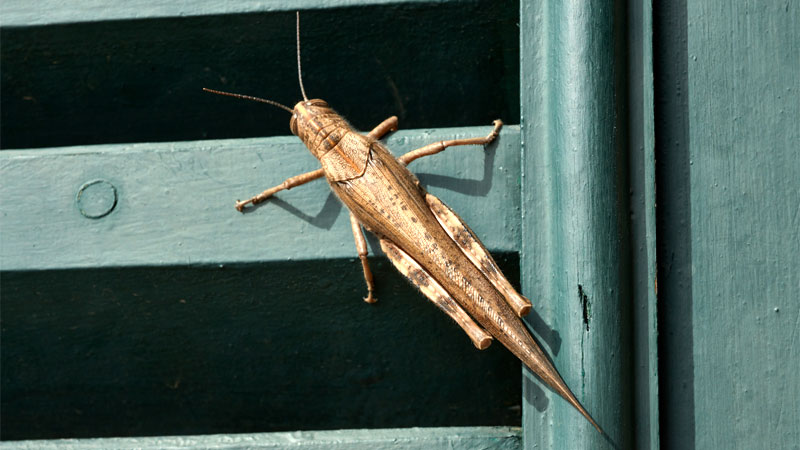You’ve probably never given much thought to the Biblical plagues or how a little locust can be so devastating – until you walk outside one day to find your plants covered in the little green pests.
These critters are a lot more common than you might think, and we’re here to give you the lowdown on how to get rid of locusts before they become a problem.
Getting to Know Locusts
We won’t go into too much detail about these little guys, since they’re literally a subsect of grasshoppers. Instead, we’ll focus on a few locust-specific facts that may help you identify a potential swarm invasion before it happens.
Locusts vs Grasshoppers
Out of approximately 11,000 species of grasshopper, only 19 are dubbed as locusts. There are six main factors that lead to a species being deemed a locust by the scientific community. These are:
- Defense Mechanisms – Both grasshoppers and locusts will try to jump away, but grasshoppers will also regurgitate (often dubbed “chewing tobacco”) while locusts actually release toxins. Also, Locusts are known to bite while grasshoppers won’t bite.
- Diet – Grasshoppers will eat just about anything plant-related, even dead leaves, while locusts only eat green plants (and occasionally dead grasshoppers) and consume only 1/16 as much food.
- Flight – A few grasshoppers are flightless insects, but locusts can (and do) fly.
- Lifespan – A typical grasshopper lives for a year, but locusts burn out at a mere three to six months.
- Size – Grasshoppers tend to measure around two inches long, while locusts can be up to an inch longer.
- Swarming – This one has exceptions, as most locusts will swarm but grasshoppers will only swarm (in smaller numbers) if they suffer a serotonin spike.
See Also: 13 Facts About Grasshoppers
Types of Locusts (American Species)
There are only a few species of locusts living in the US or which might cross into Texas. These are:
#1 – American Grasshopper (Schistocerca americana)
A rare exception to the swarming rule, American grasshoppers (AKA American bird grasshoppers) tend to only form small swarms on occasion.
#2 –Central American Locust (Schistocerca piceifrons piceifrons)
A Mexican subspecies closely related to the American grasshopper which may occasionally wander into southern Texas. It’s the subject of ongoing studies to determine its value as a food resource.
#3 – Differential Grasshopper (Melanoplus differentialis)
Generally green to brown, darkening with age, and yellow antennae (some variations exist), this species is known to feed in large swarms.
#4 – High Plains Locust (Dissosteira longipennis)
Now-rare species with banded wings that last swarmed in the 1930s.
#5 – Migratory Grasshopper (Melanoplus sanguinipes)
Sometimes referred to as red-legged grasshoppers due to their reddish colored legs
#6 – Pallid-Winged Grasshopper (Trimerotropis pallidipennis)
Native to American deserts, they’re camouflaged to blend in with rocky soil and most often cause swarms in Arizona.
#7 – Rocky Mountain Locust (Melanoplus spretus)
Holding a record in Guinness for an 1875 swarm estimated at 12.5 trillion locusts, the species suddenly vanished with one last sighting in 1902 and is now believed to be extinct.
Related: 15 Different Types of Crickets
Locust Swarms and Agriculture
Grasshoppers may eat as much as 16 locusts do, but when you have hundreds or thousands of swarming locusts, a single grasshopper’s appetite seems nonexistent.
Swarms can be small or they can be insanely large, such as the swarm of Rocky Mountain Locusts, which covered an area larger than California. In a matter of days, a single swarm can completely denude acres of farmland.
Ornamentals, flowering plants, and fruiting plants alike don’t stand a chance. Thankfully, large swarms in the US are rare.
Will Locusts Harm My Garden?
A single locust might not do much harm. However, if they bring friends, your garden can vanish almost overnight.
They’ll eat leaves, stems, flowers, and fruit alike. A decent locust population can leave you with only jagged bits of stem poking out of the ground where a lush garden was only a few days before.
Are Locusts Really Edible?
Locusts are not only edible, they’re a valuable food source in many countries. In ancient Israel, they were an essential part of the diet for anyone taking the Nazarene oath.
To this day, they provide more protein and less plant consumption when compared pound for pound with cows. However, we don’t recommend plucking one off of a crop plant and popping it in your mouth unless you know how to prepare them properly.
Getting Rid of Locusts
When you suspect the grasshoppers in your yard might be locusts, it’s important to act fast. Luckily, there are plenty of ways to kill or repel these critters, even if they manage to get into your home.
In the Garden
In most cases, you’ll run into locusts outside. The good news is they’re usually easy to deal with as long as you aren’t facing a major swarm.
#1 – All-Purpose Flour
As we’ve mentioned in the grasshopper article, all-purpose flour can be dusted on surfaces and will turn to dough when consumed, which can prevent the locust from being able to eat. It’s perfectly safe for use on plants, but can become messy if it rains soon after application.
#2 – Natural Enemies
There’s a wide range of critters that prey on grasshoppers and locusts, such as birds, frogs, lizards, and toads. There are even beneficial insects such as parasitic wasps that will make a meal out of your hopper problem.
You can attract these critters onto your property, but just be sure you don’t mind if they take up residence.
#3 – Natural Remedies
There are plenty of natural methods out there for when you don’t want to resort to chemicals. Neem soil soaks are perhaps the best, as they can protect even trees for up to three weeks per dose. Even better, you can harvest field crops a mere 24 hours after treating them.
#4 – Sacrificial Grass
Sacrificial plants are nothing new to veteran gardeners, and are simply plants grown for the sole purpose of attracting certain pests so they won’t go after the plants you wish to keep. When it comes to grasshoppers, it can be tough to find a sacrificial plant because they’ll eat anything.
But locusts are a little more discerning and see tall grass as both a shelter and food source. Thus, you can plant a small patch of tall ornamental grass away from your garden and the locusts will usually be drawn to that spot.
You can then kill them using a pesticide or other method without contaminating a larger area.
#5 – Companion Planting
The antithesis of sacrificial planting, companion planting (or complimentary gardening) is a fine art. This method involves planting herbs and other plants that repel critters, thus protecting more valuable crops.
Consider planting a few bulbs of garlic (or other alliums) to protect vulnerable gardens from locusts. Herbs such as basil, citronella, lemongrass, mint, and rosemary are also great choices.
These won’t stop a hungry locust swarm, but they can redirect a few of these critters towards the sacrificial plants.
In the Home
It’s pretty rare for a locust to enter a home of its own volition, but when there’s a swarm, a few could accidentally find their way in through an open window or door.
Luckily, they’re not difficult to get rid of, even if you’d rather not pick one up with your bare hands.
#1 – Boric Acid
While boric acid is generally safe for household use, even the best brands (such as Humco) can be a skin irritant and toxic when consumed. However, if you keep it away from kids and pets, sprinkling a little boric acid where the invading locust has been spotted can prove a fast and easy kill method.
- Many household uses
- Meets NF standards
- Boric Acid Powder NF 6oz
If you’re worried about the toxicity risk, you can also go for food-grade diatomaceous earth, which works just as well.
#2 – Garlic Tea
Garlic is a powerful repellent and can even kill some critters on contact. There are many ways to prepare garlic sprays, but one of the easiest and most potent ways is garlic tea. Simply run two cloves of garlic through a blender and mix with 10 cups of water. Bring the mixture to a boil, then let it steep overnight.
You can mix one part garlic tea per three parts water in a spray bottle (the rest can refrigerate for a week or two) and spray it on any plants or surfaces where the little intruder has been spotted.
Try to avoid spraying the furniture, though, unless you’re Italian or have a lycanthrope/vampire problem. The tea spray can be used outdoors as well as indoors, but can be rather potent if you don’t like garlic.
#3 – Shoot Them
A while back, we reviewed the Bug-A-Salt line of “bug sporting” goods. They’re technically meant for flies and other smaller insects, but the newer models can stun grasshoppers and locusts with a well-aimed shot.
The best part is, the ammo is table salt, so this method is a fun way to keep your prey from flying away.
- Updated with a new, rapid fire Cross Bolt Safety.
- Improved engineering on trigger mechanism. It's now VERY light – so be...
- Barrel has been lifted & patridge sight added for extremely accurate shooting.
#4 – Sticky Traps
Sticky traps can be used both indoors and outdoors. You can buy the ones you use for houseflies or even make one yourself using anything from double-sided tape to honey on a strip of paper.
The advantage of sticky traps is that any bug (and even small critters like mice, if you’re lucky) will become stuck and starve to death. The disadvantage is that your pets or children can also get themselves stuck, and cleaning off the adhesive from hair or fur is a rather arduous task.
- READY TO USE: Cricket XL Giant Glue Traps are pre-scented and are intended for...
- MAXIMUM PROTECTION: Catchmaster glue traps are safe, non-toxic and mess-free....
- HOME & FAMILY SAFE: Designed to help you keep your family protected and safe...
Don’t Fight Swarms Alone
Tackling one or two locusts is one thing, but if you’re facing a full-blown locust infestation, it’s time to call in some professional backup.
By contacting a local exterminator quickly, they can deal with a swarm before your garden plants are completely denuded. However, expect to take some losses no matter how fast the cavalry arrives.
For More Tips
Because locusts are a type of grasshopper, we’ve kept it pretty simple here when dealing with control methods. However, you can find even more tips and tricks in our main article on grasshoppers.
- How to Get Rid of Hawks - March 8, 2024
- How to Get Rid of Pill Bugs (Rolly Pollies) - March 1, 2024
- How to Get Rid of Groundhogs (Woodchucks) - February 5, 2024

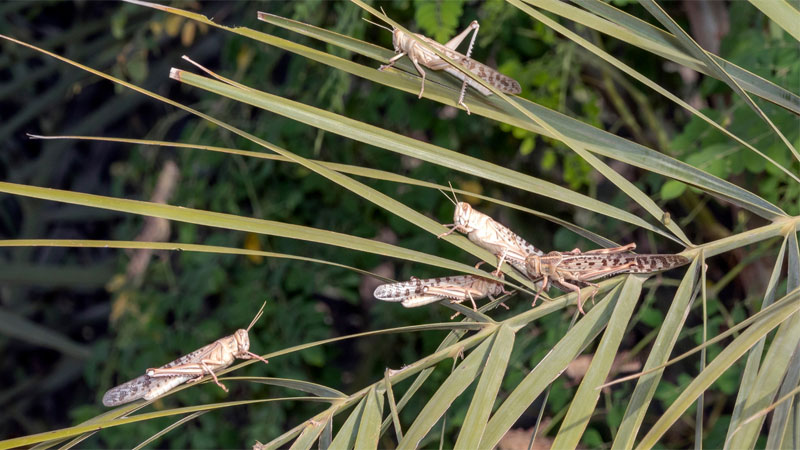
 Just tell me how to get rid of ’em.
Just tell me how to get rid of ’em.